Agroforestry Takes Root in the Great Lakes Region
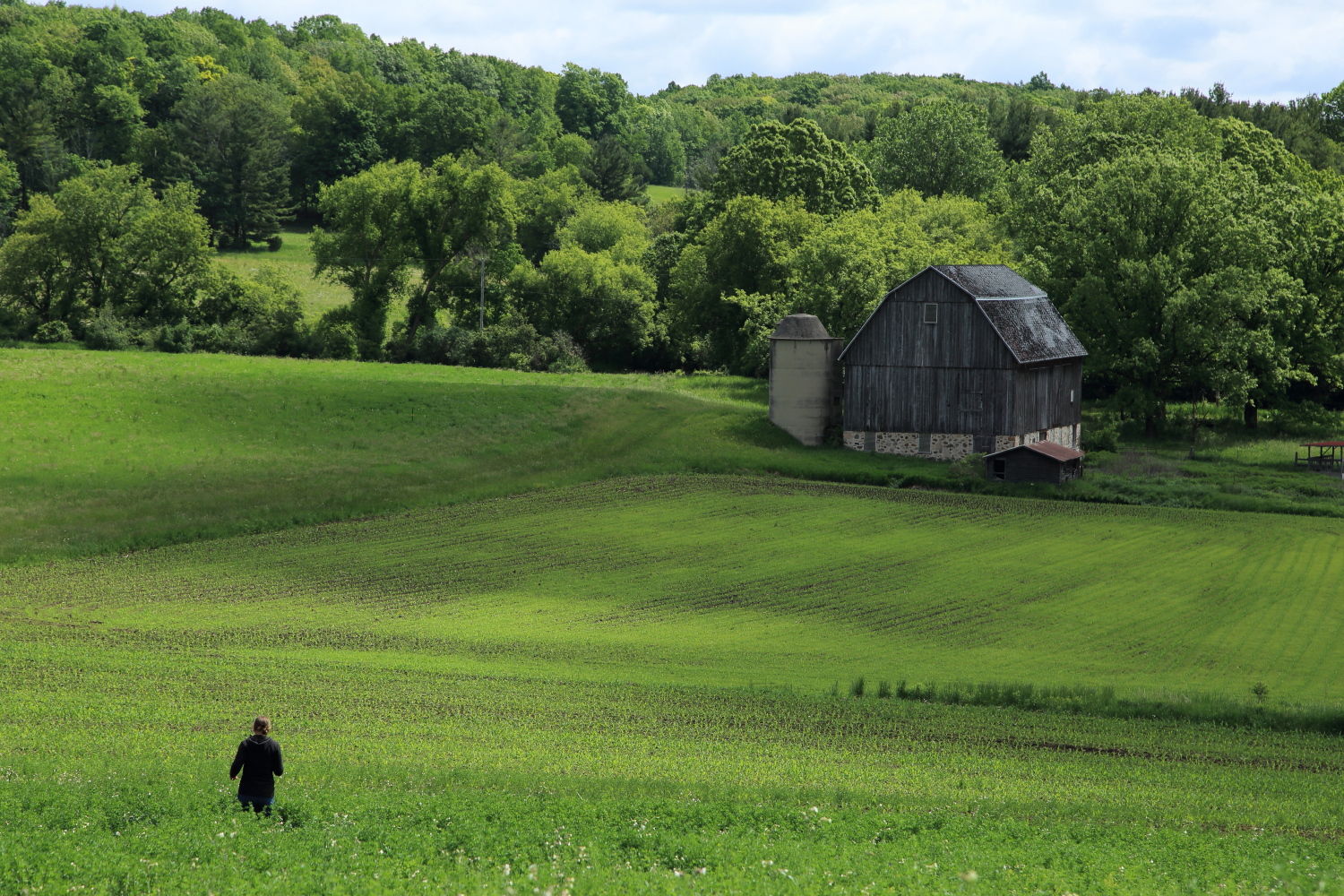
A Note from GLPF –
Agroforestry has arrived in the Great Lakes through the hard work and persistence of our Savanna Institute-led team. Agroforestry – incorporating trees into row crop farmland – substantially reduces nutrient loss from fields, improves water quality, creates wildlife habitat, increases biodiversity, and make farmland more resilient in the face of climate and market stresses. With our support, the Savanna Institute and over ten partners including Ozaukee Washington Land Trust, Riveredge Nature Center, and Chiwara Permaculture Research and Education, will establish a growing set of agroforestry pilot farms, engage a community of farmers and customers throughout the basin, and develop practitioners’ guides to agroforestry that will accelerate its growth across the basin. This is a game-changing project, and I’m pleased that photographer and writer, Randall Hyman, was able to spend time with some team members last summer and capture their stories. I hope this piece inspires you as much as it inspires me.
Shannon Donley, Project Implementation Manager
Agroforestry Takes Root
When plows first cut into Wisconsin’s rich soils in the 1800s, settlers had visions of endless bounty and new beginnings. Two centuries later, that vision has blurred. With farming pricier and dicier than ever, some Wisconsinites are forging another kind of new beginning.
From Lake Michigan to the Mississippi, farmers across the region are embracing a practice called agroforestry that increases profits and replenishes exhausted soils by incorporating trees into agricultural operations in climate-friendly, low-impact ways.
“Agroforestry blurs the line between farmland and conservation spaces,” says Barbara Decré of the Madison-based Savanna Institute, a new Great Lakes Protection Fund (GLPF) partner whose mission is to promote agroforestry across the upper Midwest. As the institute’s community agroforester in Wisconsin, Decré educates farmers about the many ways that trees and cropping can work together to steward land and livelihood.
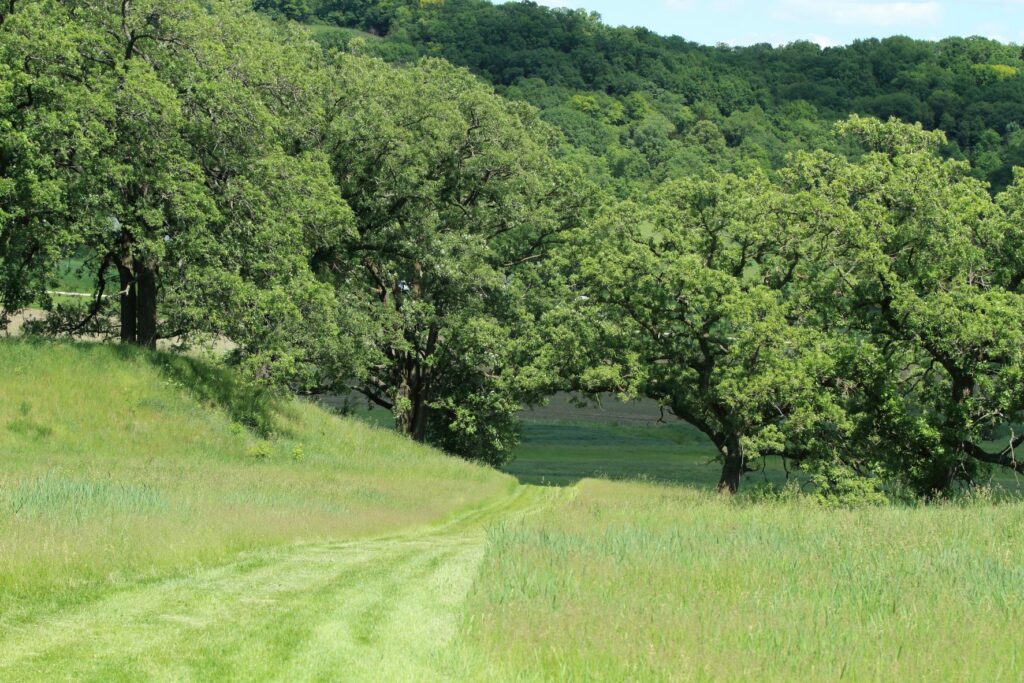
Citing crops as varied as chestnuts, hazelnuts, elderberry and aronia berry, Decré adds that some agroforestry products are highly nutritious. She also says that agroforestry is taking root far beyond Wisconsin.
“Some farmers think agroforestry is something new,” says Decré, “but it’s actually been practiced all around the world for thousands of years.”
Something old, something new
Decré cites the olive groves of her native France and the venerable dahesas and montados of Spain and Portugal, spanning 7.5 million acres of traditional grasslands interspersed with cultivated oak trees that provide food and shelter for grazing animals that fertilize the trees. Agroforestry’s minimal use of chemical fertilizers, herbicides, pesticides, and tilling make it an economically and ecologically attractive option to standard agriculture.
“In our current system, you can own 100 acres and not be able to feed yourself and your family,” says Decré. “A lot of farmers have been telling me that fighting against nature is just creating more problems.”
Before European settlers arrived, southern Wisconsin hosted an ecosystem called oak savanna—namesake of the Savanna Institute. It was a transition zone from tallgrass prairies to eastern hardwood forests, covering 50 million acres from Texas to southern Canada. Today, less than .01% remains, but the upper Midwest remains prime for savanna restoration and agroforestry improvements.
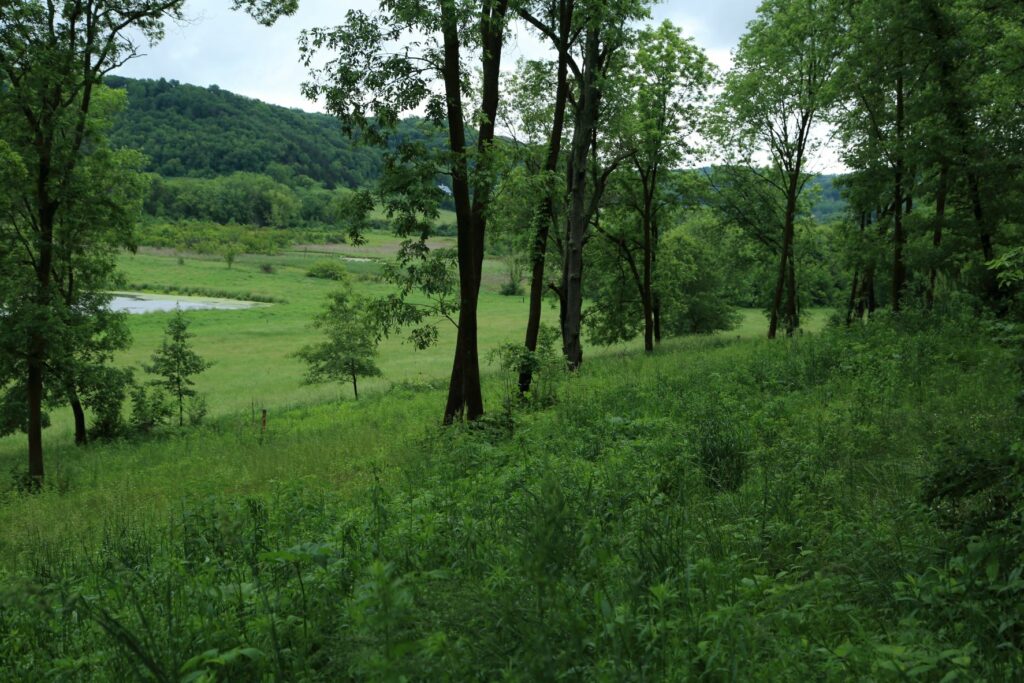
In Wisconsin, Decré works closely with Matt Wilson, one of the institute’s technical service providers.
“The agroforestry practices we typically work with are silvopasture—that’s where you mix trees and livestock—and alley cropping, which is where you’re mixing trees and crops,” says Wilson. “The other two main ones are riparian buffers—trees along waterways—and windbreaks.”
Decré mentions a fifth type of agroforestry practice, forest farming, that is rapidly gaining traction elsewhere in the United States with the planting of shade-loving crops like mushrooms, ginger and ginseng in open woodlands.
“We just finished an install with an organic dairy farmer who’s totally grass-based,” says Wilson. “He wanted more comfort for his animals, and shade is a big part of why we do silvopasture. Black cows standing out in the sun in the summer get pretty hot.”
Wilson says that grasses do better under shade trees during heat waves and droughts, and that the trees themselves can be a source of feed.
“We planted half poplar trees, and those can actually be cut down and fed to animals directly when there isn’t grass. They’ll eat the leaves right off of it and leave the wood behind. It’s kind of an emergency bank account.”
Naturalists as farmers
During a June farm visit near the shores of Lake Michigan, Decré stands in a muddy field amid flattened corn stalks talking with colleagues from Riveredge Nature Center, a 400-acre conservation area 40 minutes north of Milwaukee. Riveredge is converting the lower half of this field from corn to silvopasture and increasing native plantings along the farm’s small wetland.
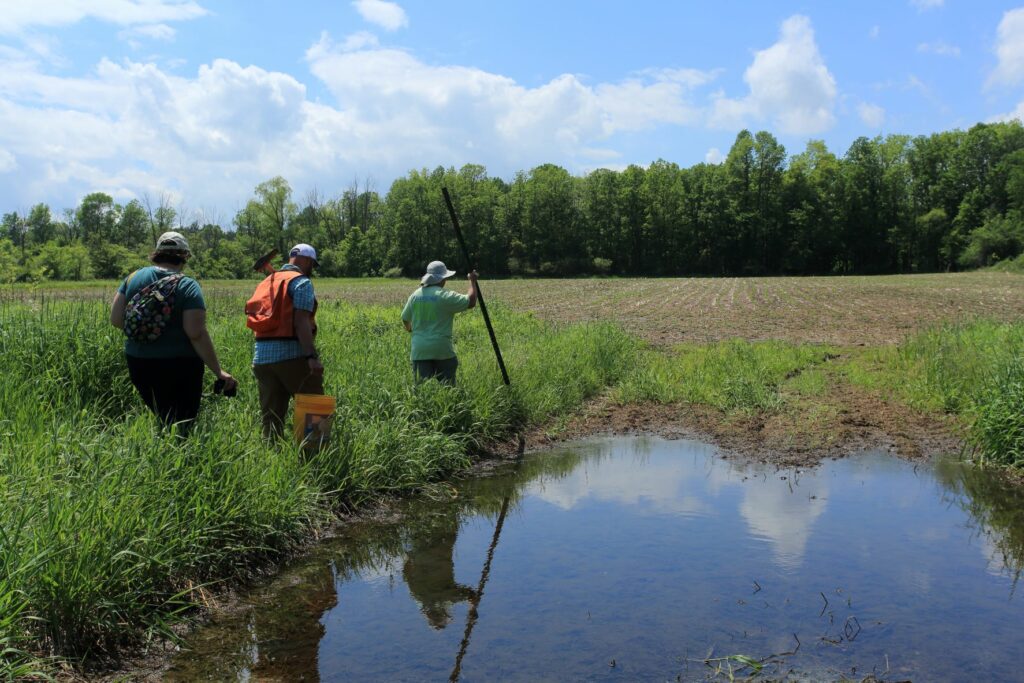
The site will showcase agroforestry to an onsite kindergarten through fifth grade environmental outdoor charter school, homeschool groups, thousands of visiting students from the region, as well as many resource professionals which receive conservation training through Riveredge programming each year.
“This way of agriculture not only makes for healthier land, water and wildlife, it also provides the perfect setting to connect people to new food sources and understand the wildlife importance and lost cultural value of native plants,” adds Matt Smith, Riveredge’s Director of Research and Conservation. “The strong relationships we have forged with our neighbors have inspired them to convert their peripheral fields from corn and soy to pasture. This will not only provide for better water infiltration, but also buffer our plantings from harmful herbicide drift.” Just this year, over 800 feet of the forest edge turned brown from herbicide damage.
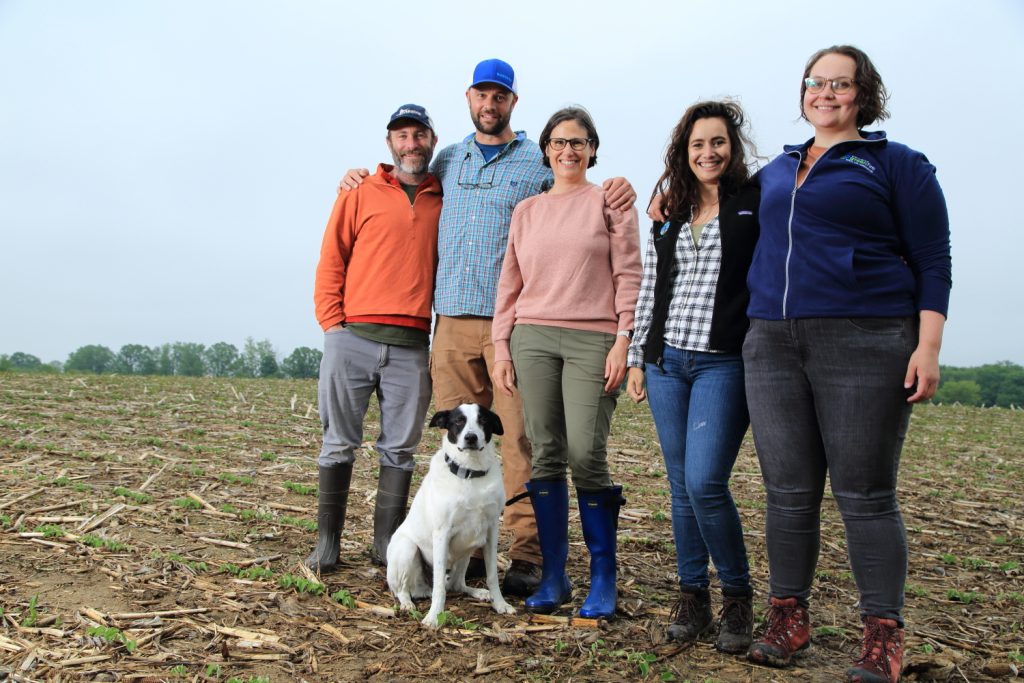
Riveredge neighbor Melissa Moline is no stranger to farming. “She grew up on a dairy farm in southwestern Wisconsin where cows were actually allowed to graze,” adds Matt Smith, “so she knows what a healthy pasture looks like.” Currently, the majority of the surrounding farm landscape is in no-till [a more sustainable method of seeding without tillage]; however, it still gets plowed under and injected with slurry [liquid manure] every year due to the ever-growing dairy farms which dominate the area.
Ozaukee County is rich in natural areas and farmland, but agricultural runoff is increasingly problematic. It all drains into the Milwaukee River and, eventually, Lake Michigan. Agroforestry helps soils retain nutrients and reduce fertilizer runoff.
Smith says that, in addition to planting native wildflowers, grasses, sedges, and rushes, they’ll be installing native fruit and nut trees in both the lower wetland and amid the upland pasture. To monitor their impact, Smith has installed bioacoustic recording devices atop steel posts along the edge of the wetland. This will track changes in bird, bat and amphibian populations over time as the land is enhanced.
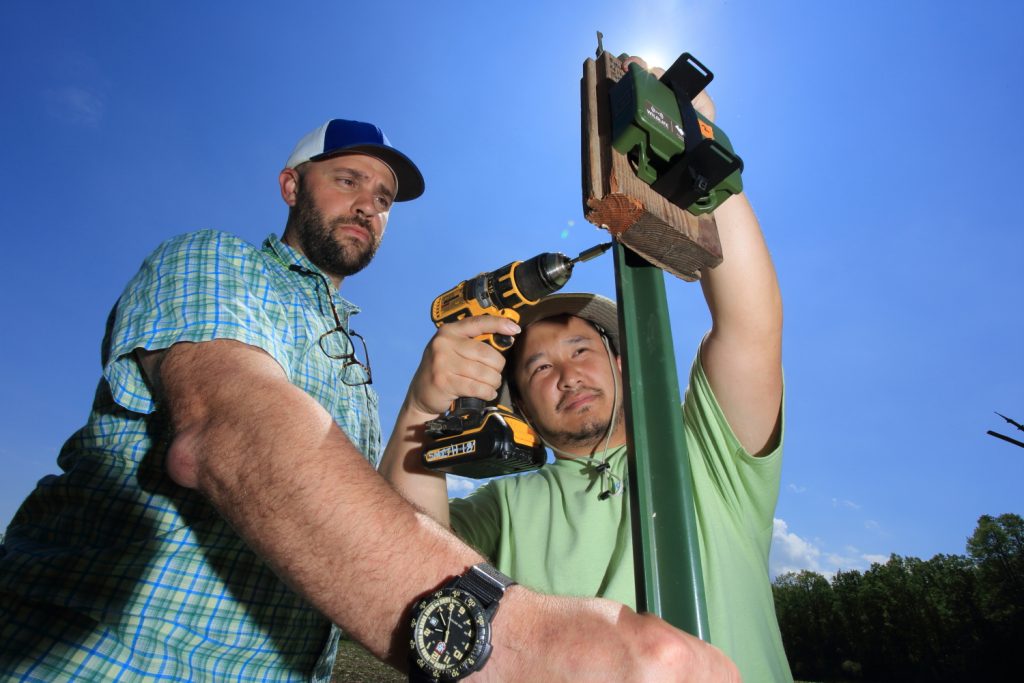
“Native plants are adapted to these sites,” says Smith. “They have hundreds of unique relationships with a diverse litany of moths, butterflies, leafhoppers, and other insects. They support pollinators, pest predators, and provide a refugia. We’re bringing back habitat, we’re bringing back food, we are stabilizing the ground from erosion, and we’re helping water quality.”
Fighting floods from the top down
Another local group working with the Savanna Institute is the Ozaukee Washington Land Trust (OWLT) which, since its founding in 1992, has brought 7,100 acres of forests, wetlands and open space under its protection through acquisitions and conservation easements. Covering its two namesake counties, it provides a hedge against rapid urban sprawl from Milwaukee.
“We partner with the Milwaukee Metropolitan Sewerage District (MMSD),” says OWLT’s program manager Katie Parrillo during a visit to a newly acquired farm in kettle moraine country, the rocky hills left by retreating ice sheets. Agricultural storm runoff from this porous land can be substantial, so MMSD helps purchase properties like this one along the upper Milwaukee River to mitigate flood risk in Milwaukee.
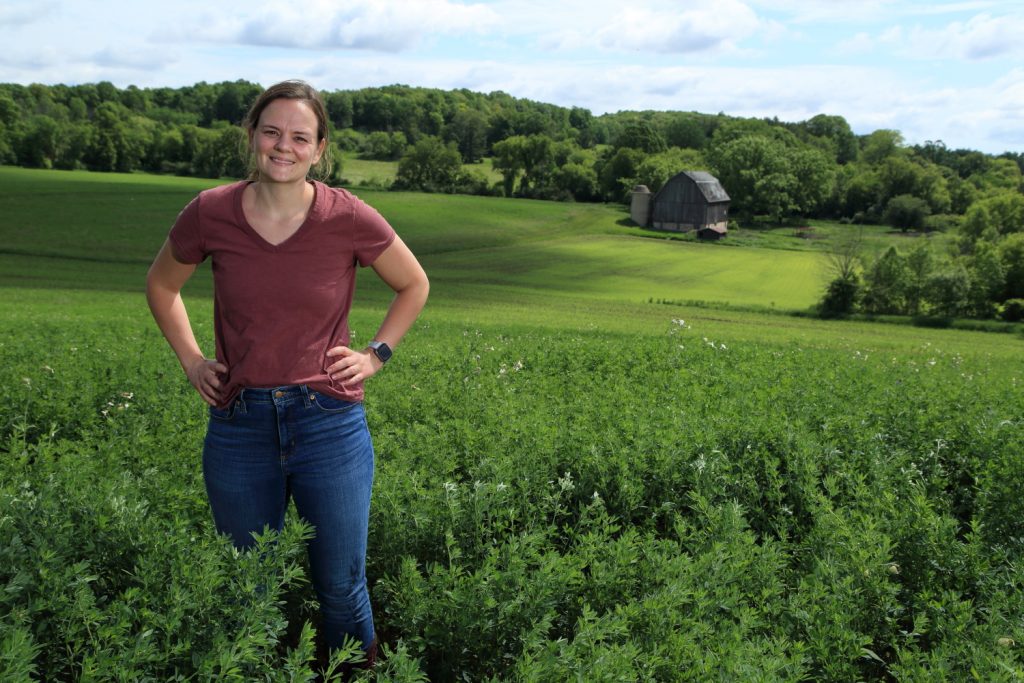
Toward that end, OWLT works with farmers in the watershed to adopt management practices, including agroforestry, that will reduce runoff from its lands. As a conservation organization, OWLT tries to set an example for surrounding land-owners and farmers, showing them how to reduce their carbon footprint and improve water quality with fewer chemicals and less tilling while building healthier soils and protecting threatened habitat.
At OWLT’s 88-acre Riverbend Conservancy, just upstream from Riveredge Nature Center on the Milwaukee River, staff have been steadily increasing the riparian buffer zone since 2013. It is one of Washington County’s few large tracts of undeveloped land along the river, with 20 acres of lowland hardwood forest offering a glimpse of what the river basin looked like before European settlement. Never farmed because of its swampy bottom, it remains rich in diverse tree species.
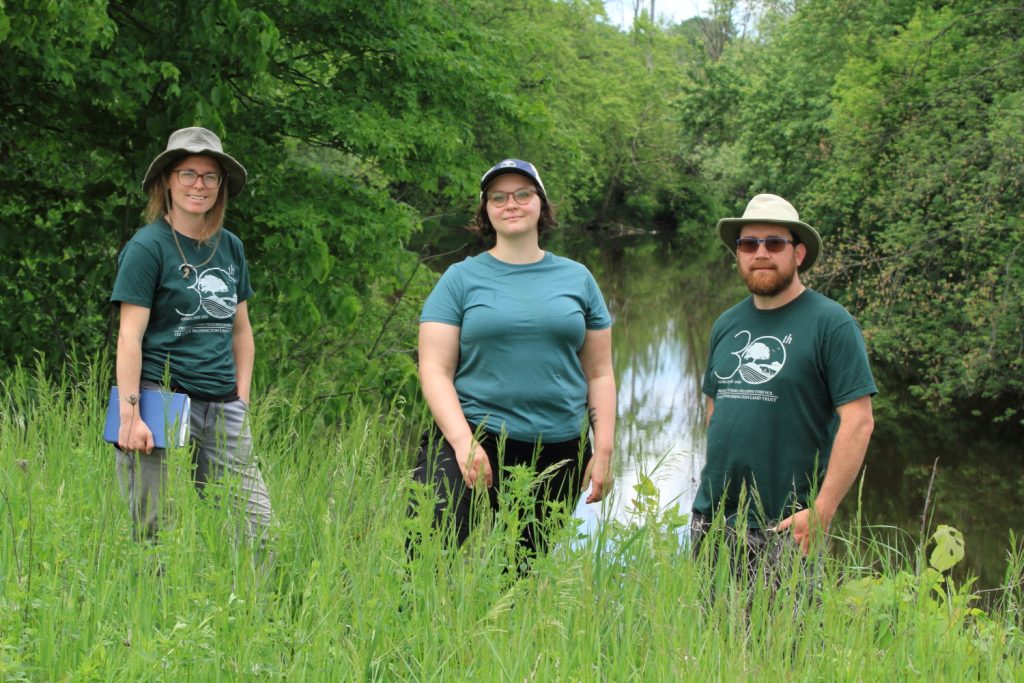
Building model farms
As it enlists more farmers, the Savanna Institute is fast becoming a regional authority on agroforestry, with four demonstration farms clustered near the town of Spring Green in southwest Wisconsin. This is Frank Lloyd Wright country, where the famous architect experimented with designing farmhouses—including his own on the 800-acre farm called Taliesin—to fit the landscape rather than make the landscape fit the house. Agroforestry follows a similar philosophy, adapting agriculture to native systems rather than bending them to meet farmers’ demands.

On the Savanna Institute’s four farms, staff are implementing a range of agroforestry techniques—from alley cropping to silvopasture—and experimenting with a variety of tree and berry crops. At the main research farm just outside Spring Green, rows of hazelnut saplings stretch across the Wisconsin River floodplain.
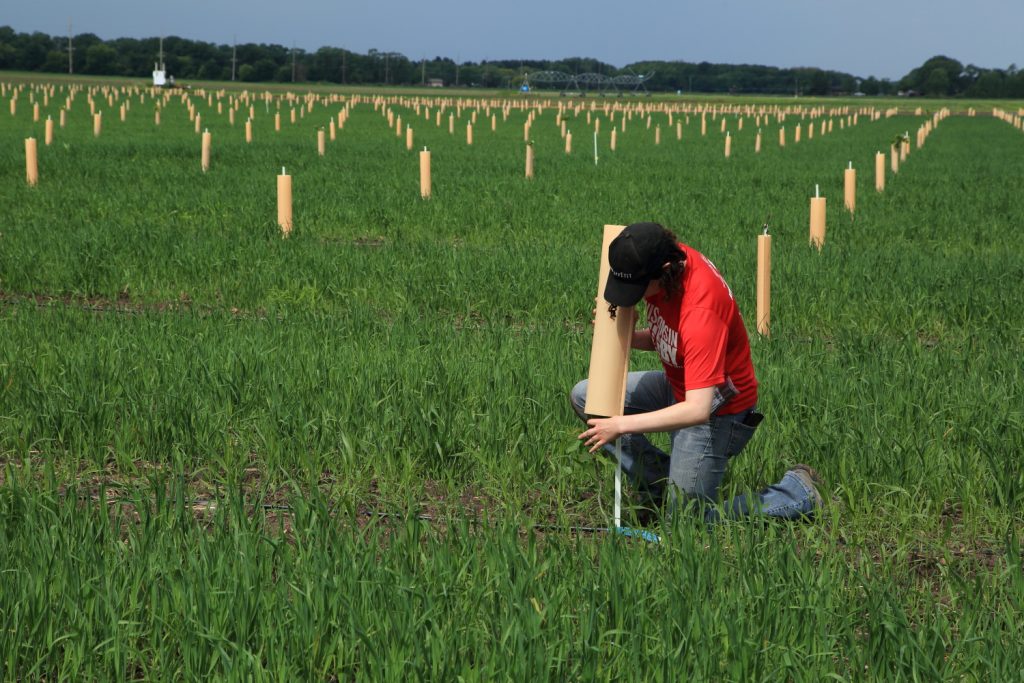
“Our other farms are more about agroforestry systems,” farm director Erik Hagan explains, “but this farm is our tree crop improvement program. This side of the field is the nursery where we’re improving genetics and propagating them to help farmers affordably implement these systems. Right now we’re focusing on hazelnuts.”

The 10-acre hazelnut breeding program is in partnership with the University of Wisconsin and University of Minnesota, but elderberries are also planted here. At another farm, chestnuts are taking root. All of these crops are surprisingly lucrative, a point not lost on the many farmers who are jumping on the agroforestry bandwagon.

“We just put them in a month ago, and I seeded oats between them as a cover crop,” says Hagan. “When I harvest the oats, I’ll mow them right into the tree rows as mulch that helps fertilize the trees. I did this on the North Farm site, so you can actually see what it looks like.”
At North Farm, ecosystem scientist Nate Lawrence is already busy augering three-foot-deep holes beneath each hazelnut sapling and inserting multi-stage filters, called lysimeters, that he built to catch soil nutrients and measure soil health. The results will help Hagan monitor how successful his farming methods are.
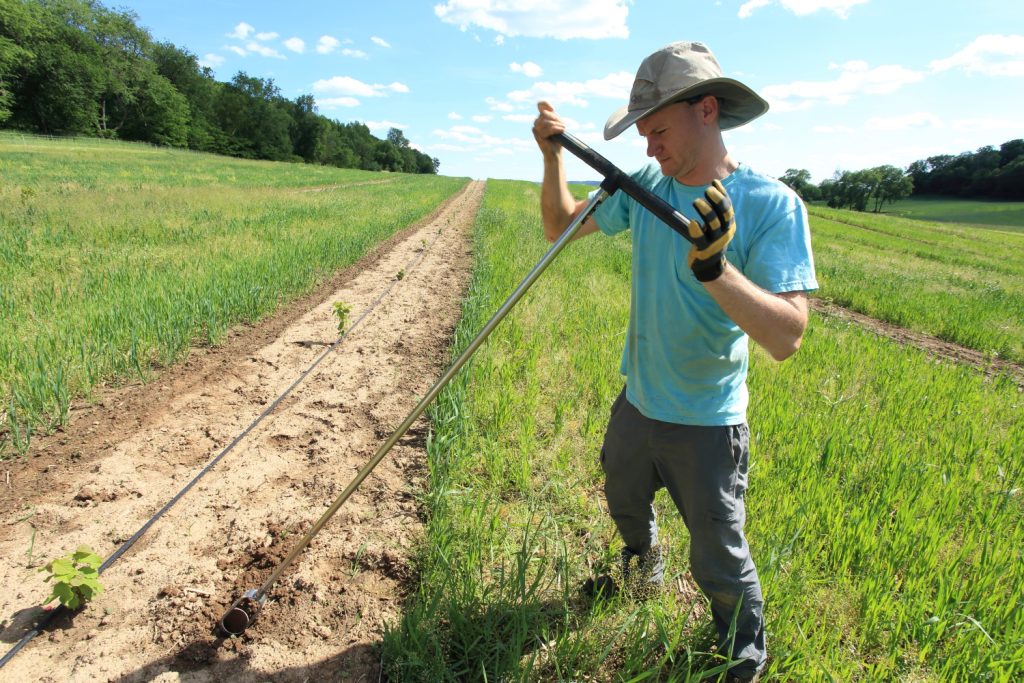
New beginnings
Amid the intense activity on all four farms, there is a sense of new beginnings. Indeed, two of the properties are recent acquisitions, and much of the Savanna Institute’s staff is new as well.
“Two years ago,” says Devon Brock-Montgomery, “Savanna Institute only had 12 employees. Now we have over 30, and we’re still growing.”
As the program manager of the five-year partnership with the Great Lakes Protection Fund, Brock-Montgomery sees the big picture.
“The Savanna Institute’s mission is to lay the groundwork for agroforestry in the Midwest, providing farmers with the resources they need,” she says. “That can be helping them select economically viable crops or providing ecosystem services to help improve soil health.”
On a visit to the institute’s most recently acquired farm, called Hillside, she admires the Wright-style home that came with the property and hikes up a road to inspect the slopes where cattle will someday graze amid lush silvopasture.
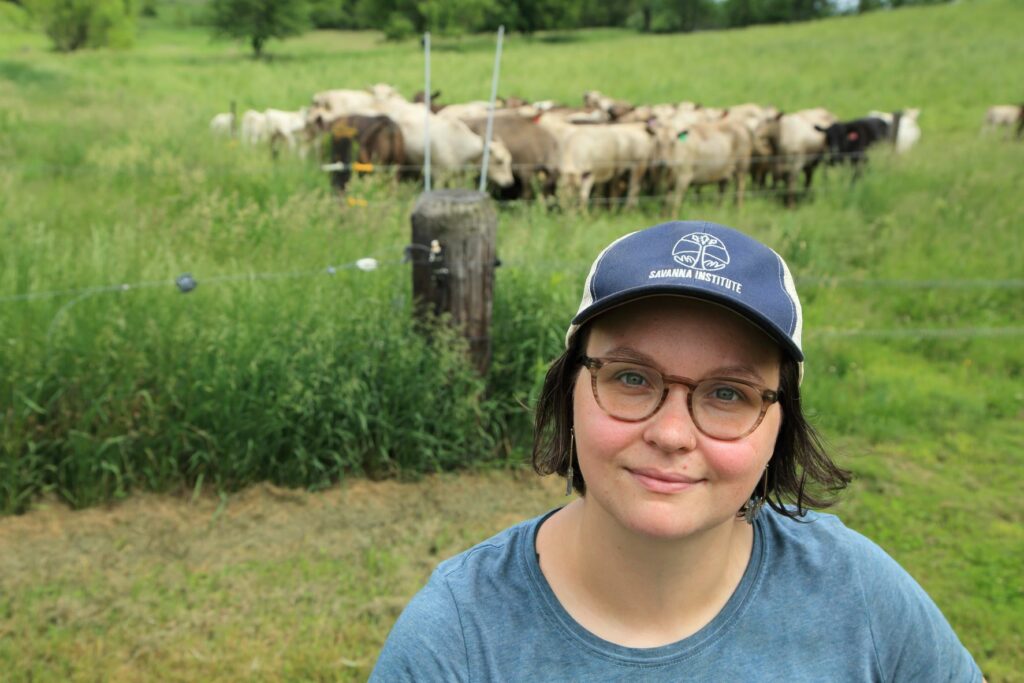
Wright’s own estate, Taliesin, is visible in the distance, and his spirit seems omnipresent. Here in his native Wisconsin, he might have been pleased to see agroforestry taking root, from Lake Michigan westward, shaping agriculture the same way he shaped architecture, to fit the land.
Special thanks to Matt Wilson for his editorial support.
Story and photos by Randall Hyman.